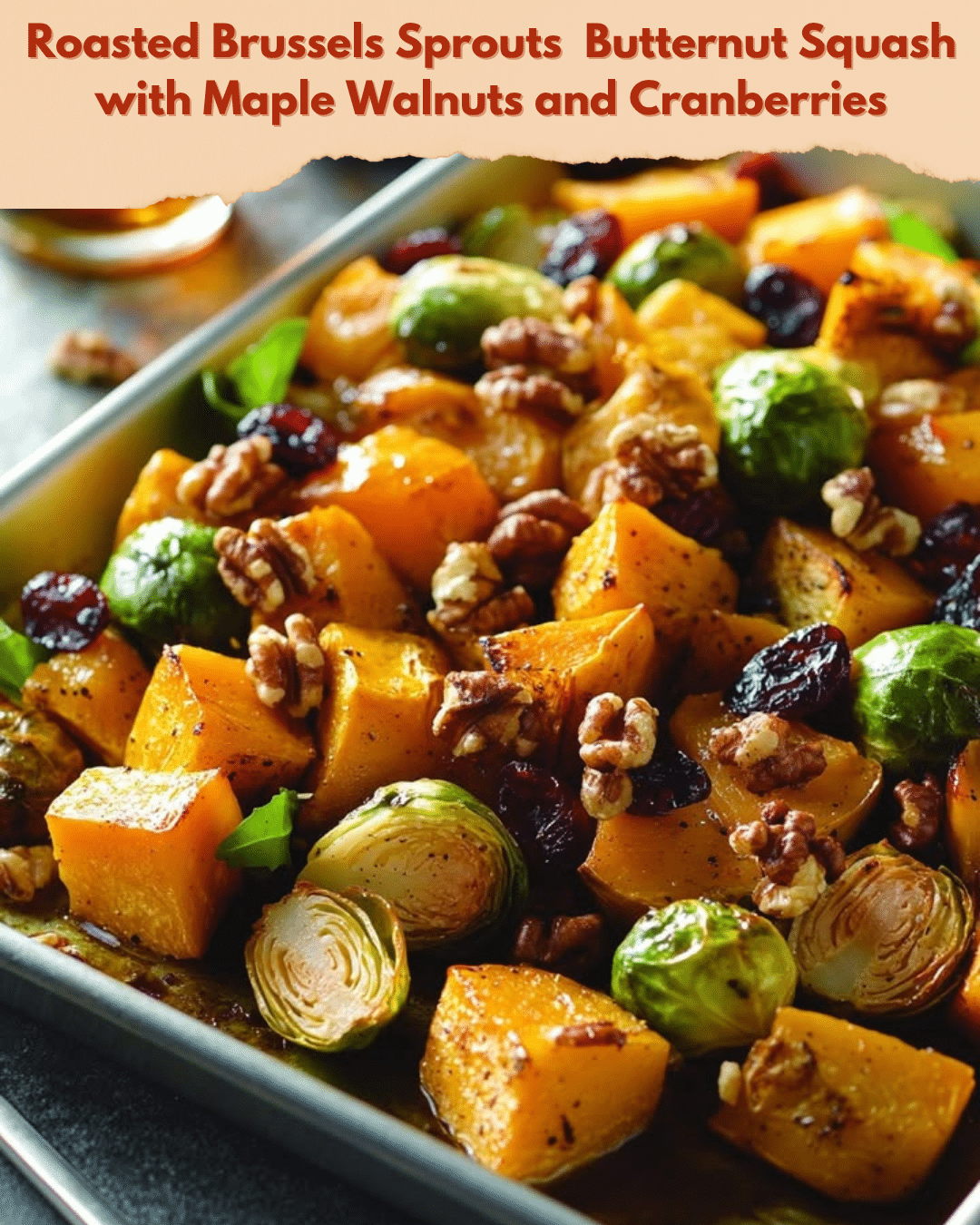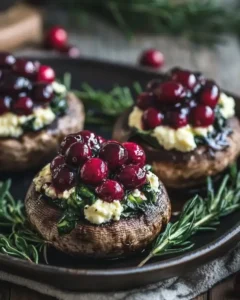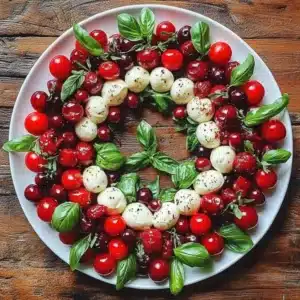Roasted Brussels Sprouts Butternut Squash with Maple Walnuts and Cranberries: A Delightful Fall Recipe
Roasted Brussels Sprouts Butternut Squash with Maple Walnuts and Cranberries is an autumn-inspired dish that brings together the earthy flavors of Brussels sprouts and the natural sweetness of butternut squash. Topped with cranberry tartness and a maple glaze, this dish becomes a delightful addition to any meal. The inclusion of crunchy walnuts adds texture, making each bite a journey through layers of flavor and sensory delight.
This recipe offers a perfect balance of flavors: the savory taste of roasted Brussels sprouts harmonizes beautifully with the sweetness of caramelized butternut squash. The maple walnuts introduce a nutty, sweet undertone, while the cranberries add a pop of tanginess. Not only is this combination visually stunning, but it also brings warmth and comfort, ideal for fall gatherings or a cozy night in.
Preparing this dish at home is straightforward and requires minimal cooking experience. With simple ingredients and easy instructions, Roasted Brussels Sprouts Butternut Squash with Maple Walnuts and Cranberries is a foolproof recipe, perfect for novice cooks who want to impress their family and friends during the holiday season.
Quick Recipe Highlights
- Flavor Profile: Expect a medley of sweet, savory, and tangy elements, with the maple-glazed walnuts offering a warm sweetness against the earthy Brussels sprouts.
- Texture: Experience the crispy exterior of roasted vegetables and the satisfying crunch of toasted walnuts, balanced by the tender chewiness of cranberries.
- Aroma: Delight in the rich, appetizing scent of roasted vegetables intertwined with the sweet perfume of maple and spices.
- Visual Appeal: This dish is a feast for the eyes, with vibrant green Brussels sprouts, golden butternut squash, crimson cranberries, and a glossy maple sheen.
- Skill Level Needed: With straightforward instructions, this recipe is accessible for beginner cooks eager to enhance their culinary repertoire.
- Special Equipment: A sturdy baking sheet and a mixing bowl are all you need to create this culinary masterpiece.
Recipe Overview
- Difficulty Level: This recipe is simple, with minimal preparation and easy cooking steps, making it approachable for any home cook.
- Category: It’s a fabulous side dish that complements various mains, effortlessly fitting into lunch or dinner menus.
- Cuisine: Inspired by North American fall flavors, this dish showcases a blend of traditional and modern culinary influences.
- Cost: With affordable, easily available ingredients, this dish offers an economical yet gourmet enrichment to any meal.
- Season: Ideal for the fall season, when Brussels sprouts and squash are at their peak freshness and most flavorful.
- Occasion: Perfect for holiday gatherings, Thanksgiving, or a simple family meal that feels extraordinary.
Why You’ll Love This Recipe
The taste and texture of Roasted Brussels Sprouts Butternut Squash with Maple Walnuts and Cranberries will capture your palate instantly. The caramelized edges of the vegetables create a robust, savory profile that blends seamlessly with the sweetness of maple walnuts. Each bite is a contrast of tender squash with the crispness of Brussels sprouts, making every serving an exciting culinary adventure.
Not only is this recipe delicious, but it is also incredibly convenient. With a prep and cook time totaling just 45 minutes, it suits busy schedules and allows you to enjoy a restaurant-quality dish from your kitchen. The ease of preparation without any fancy techniques or equipment makes it a stress-free cooking experience.
This dish is a powerhouse of nutrients, thanks to its wholesome ingredients. Brussels sprouts and butternut squash are rich in vitamins and antioxidants, while walnuts provide healthy fats and protein. Cranberries add fiber and vitamin C, making this recipe a nutritious addition to any dietary plan.
Perfect for social gatherings, this recipe is a superb centerpiece for any table. Its vibrant colors and intricate flavors invite lively conversations, making it a joyful sharing experience with friends and family. Its impressive presentation can easily spark interest and admiration for the chef’s skillfulness.
Despite its gourmet feel, this dish is cost-effective due to its reliance on seasonal and readily available ingredients. You won’t break the bank to create a meal that looks elegant and tastes exceptional. Whether for a simple weekday dinner or a lavish gathering, you’ll find this recipe budget-friendly yet indulgent.
Historical Background and Cultural Significance
Brussels sprouts and butternut squash have long been staples in autumnal cuisine, celebrated for their compatible flavors and nutritional value. Roasting these vegetables, a technique longstanding in various culinary traditions, is known to enhance their inherent sweetness and earthiness, providing a satisfying, wholesome experience.
The tradition of using maple syrup as a sweetener dates back to Native American techniques for extracting sap from maple trees. This ingredient lends the dish a touch of historical authenticity, resonating with American culinary heritage. Maple’s integration into contemporary recipes showcases its versatility and timeless appeal.
While cranberries emerged as a staple of Thanksgiving feasts due to their harvest season, their tart flavor provides contrast and complexity to many dishes, including this one. Historically, cranberries were used by Native Americans in pemmican, showcasing their adaptability across culinary contexts.
Globally, versions of this dish appear in various forms, with regional tweaks in vegetable choice or spice blends. While the foundation remains the same, the eclectic nature of Brussels sprouts’ roasted dish demonstrates its ability to transcend borders, appealing to diverse palates worldwide.
Ingredient Deep Dive
Brussels sprouts boast a rich history dating back to ancient Rome, with cultivation gaining popularity in Northern Europe more than 400 years ago. Nutritionally, they are a powerhouse of vitamins C and K, fiber, and antioxidants, making them a valuable component of a balanced diet. Look for compact, vibrant green sprouts when selecting, and store them in a plastic bag in the refrigerator’s crisper drawer to keep them fresh.
Butternut squash, a staple in autumn cooking, originated from indigenous peoples of the Americas and has become integral to seasonal cuisine worldwide. It’s packed with vitamins A and C, potassium, and fiber, promoting eye health and digestive wellbeing. Choose firm squash with unblemished skins, and store them in a cool, dark place to maximize shelf life.
Maple syrup’s cultural significance stretches back to early Native American uses, becoming an iconic North American ingredient. Its natural sugars offer a healthier alternative to refined sugars, providing minerals like manganese and riboflavin. Keep maple syrup in a cool, dry place to maintain its robust flavor without refrigeration.
Cranberries have been associated with festive foods since Native American times, commonly utilized in sauces and breads. These berries offer a multitude of health benefits, including a boost in antioxidants and anti-inflammatory properties. Choose firm, whole berries, and keep them refrigerated to prolong their freshness.
Common Mistakes to Avoid
- Overcrowding the baking sheet can result in steaming rather than roasting the vegetables. Arrange them in a single layer for optimal caramelization.
- Skipping the step to dry Brussels sprouts after washing can prevent them from becoming crispy. Ensure they are thoroughly dried before roasting.
- Using low-quality maple syrup significantly impacts flavor. Choose pure maple syrup over artificial varieties to achieve the best taste.
- Underseasoning can lead to a bland dish. Be generous with salt and pepper to elevate flavors.
- Overcooking can make the squash mushy. Keep an eye on cooking times to ensure the perfect al dente texture.
- Ignoring moisture in the walnuts can prevent them from toasting properly. Make sure they are dry before coating in maple syrup.
- Failing to preheat the oven can lead to uneven cooking. Always allow your oven to reach the desired temperature before cooking.
- Adding cranberries too early may cause them to overcook and lose texture. Mix them in just before serving.
- Forgetting to toss the vegetables midway through roasting could result in unevenly cooked pieces. Stir halfway through to promote uniform cooking.
- Storing leftovers improperly can cause them to become soft. Keep them in an airtight container in the refrigerator.
Essential Techniques
Roasting is key to bringing out the nuanced flavors of vegetables. This technique caramelizes the natural sugars, enhancing sweetness and creating a savory, golden exterior. Achieve this by ensuring uniform size and even spacing on the baking sheet for consistent browning.
Making a maple walnut glaze involves heating the syrup to thicken and coat the nuts thoroughly. This step is crucial for infusing rich flavor and providing a balance of sweetness and crunch. Be careful to keep a low to medium heat to prevent the syrup from burning.
Tossing the vegetables halfway through roasting ensures even cooking and prevents any vegetables from burning. Check for visual cues such as caramelized edges and a softened interior to know when to turn them over. This ensures the best flavor and texture.
Balancing flavors involves tasting as you go and adjusting sweetness, salt, and acidity to suit your preference. Don’t hesitate to add a pinch of salt or a dash more syrup until you find the blend that works perfectly for your palate.
Bringing cranberries into the dish near the end of cooking preserves their tartness and integral texture. Add them after removing the dish from the oven to maintain their pop and prevent them from swelling excessively.
Pro Tips for Perfect Roasted Brussels Sprouts Butternut Squash with Maple Walnuts and Cranberries
Toast the walnuts separately at first to enhance their flavor before combining them with the maple syrup. This brings out deeper notes and ensures an even, toasty crunch without burning.
Experiment with spices like cinnamon, nutmeg, or cayenne to add complexity to the dish. A delicate sprinkle can introduce warmth or a hint of spice, refining the flavor balance.
Consider using a convection setting in your oven for even heat distribution. This reduces cooking time slightly and contributes to a more uniform roast.
Use fresh rather than dried cranberries whenever possible. Their natural juiciness will create a pleasing burst of tartness that brightens the entire dish.
For a richer taste, incorporate a little unsalted butter with the olive oil when roasting the vegetables. This can enhance caramelization and infuse luxurious depth into your dish.
Don’t skip resting the vegetables for a few minutes after removing them from the oven. This allows flavors to settle and intensify, improving the final result.
If using frozen butternut squash, let it thaw and drain excess moisture before roasting to prevent sogginess that could compromise the dish’s texture.
Store any leftover walnuts separately to keep them crisp for future salads or snacks. Their sweet glaze complements a variety of other meals beyond this recipe.
Variations and Adaptations
Regional variations of this dish can vary, such as using sweet potatoes in place of butternut squash for a southern twist. Add a sprinkle of nutmeg and cayenne for an earthy, spicy flavor profile native to southern cuisine.
For a seasonal variation, swap cranberries for pomegranate seeds during winter, adding freshness and extra tartness to the dish. Their vibrant color complements the richness of the roasted elements perfectly.
To adapt this recipe for dietary needs, make it vegan by confirming maple syrup does not contain any non-vegan processing aids. Olive oil ensures that the dish stays plant-based and heart-healthy.
For a flavor twist, consider adding smoked paprika or a dash of balsamic vinegar for an added kick. Both ingredients enhance the depth without overpowering the original taste palette.
Texture modifications can include incorporating roasted chickpeas for extra fiber and protein. They blend seamlessly with the existing ingredients, adding another layer of texture and flavor.
Think of presentation as half the eating experience. Layer the roasted vegetables neatly using a large platter, scattering bright red cranberries and walnut pieces on top, finishing with a drizzle of maple syrup for a sleek, gourmet presentation.
Serving and Presentation Guide
Plating this dish artfully involves layering Brussels sprouts next to butternut squash along a white platter for contrast. Highlight their colors by ensuring a tidy arrangement with cranberries dotting the top.
Garnishing can elevate the presentation further with a sprinkle of freshly chopped rosemary or parsley, as their green hues pop against the warm vegetables, adding aroma and visual appeal.
This dish traditionally pairs well with warm roasted turkey or glazed ham, making it a quintessential element on holiday tables. Serve alongside creamy mashed potatoes or herbed stuffing for a complete spread.
For a modern serving suggestion, use individual ramekins, filling them with a small portion for personalized servings. This twist fits equally well at casual dinners or elegant affairs, allowing guests to savor their own mini masterpiece.
Pay attention to temperature by serving the dish warm from the oven, preserving the roasted vegetables’ crispiness while allowing the maple glaze to shine.
While portions should accommodate guests’ appetites, balance serving sizes to encourage sampling of other dishes for a cohesive meal journey. Adjust as needed for intimate dinners versus grand celebrations.
Wine and Beverage Pairing
Wine pairings for this dish include a light Pinot Noir or an oaky Chardonnay, both of which provide a delicate balance, enhancing the sweetness of the maple syrup and the roasted aroma of the vegetables.
Non-alcoholic alternatives, such as a crisp apple cider or a refreshing sparkling water with a splash of lemon, complement the flavors while accommodating all guests.
Consider pairing this with light, aromatic teas such as jasmine green or chamomile, which have a gentle palate-cleansing effect and allow the dish’s diverse flavors to truly shine.
For temperature considerations, keep both wines and non-alcoholic options chilled but not excessively so, preserving their inherent flavors while refreshing the palate between bites.
Serve cider in elegant glasses or rustic mugs to match a cozy fall or winter theme, emphasizing both the comfort and sophistication of this culinary experience.
Storage and Shelf Life
Keep leftover Roasted Brussels Sprouts Butternut Squash with Maple Walnuts and Cranberries in an airtight container in the refrigerator for up to 3 days to maintain freshness and prevent contamination.
Maintain an appropriate temperature below 40°F (4°C) to avoid spoilage, ensuring all items are securely stored to prevent excessive air exposure.
Use sturdy glass or plastic containers with tight-fitting, moisture-proof lids for maximum storage longevity and flavor preservation.
Watch for signs of spoilage like an off-smell or slimy texture as indicators the dish should be discarded rather than consumed.
Reheat leftovers gently by warming them in a low oven or microwave, taking care not to overcook and prevent further texture collapse or excess softening.
Freezing is possible but not recommended for optimal texture, as roasted vegetables can become mushy upon thawing unless used in future soups or purees.
Make Ahead Strategies
To make this dish ahead, prepare all vegetables by peeling and chopping a day prior, storing them in their raw state covered in the refrigerator to keep them crisp.
Refrigerate the maple-glazed walnuts separately, ensuring they maintain their crunchy texture until the dish is assembled for serving.
Consider roasting the vegetables partially the day before, pausing just before fully cooked, then quickly reheating them in a hot oven for final crisping just before the meal.
Shell the cranberries and incorporate them fresh on the day of serving to keep them vibrant and bursting with flavor, avoiding refrigeration’s effects on their texture.
Add any fresh herbs or citrus zest to the dish right before presenting, ensuring vibrant flavors that haven’t diminished from storage.
For reheating, opt for a low-temperature oven to revive roasted textures without drying, and toss gently to distribute the heat evenly throughout.
Scaling Instructions
To halve this recipe, simply reduce the ingredients proportionally, maintaining balance in seasoning to ensure the full flavor profile is preserved.
Doubling or tripling can be accomplished by maintaining ratios consistent and utilizing additional baking sheets to prevent overcrowding, which could steam rather than roast the vegetables.
Adjust equipment needs such as pan sizes with larger quantities, ensuring you have enough roasting surface area for heat circulation.
Modify timing slightly when increasing batch size, watching vegetables closely to avoid under- or over-roasting by considering factors like the variance in cooking time per batch.
Storage space can be planned with additional containers to keep larger quantities neatly organized in the refrigerator or pantry space available.
Nutritional Deep Dive
This dish offers a well-rounded macro breakdown with primarily carbohydrates from the squash and cranberry, healthy fats from the walnuts, and fiber from all vegetables.
Micronutrients are abundant, featuring high levels of vitamins A, C, and K, antioxidants, and essential minerals, contributing positively to immune and overall health.
Health benefits include anti-inflammatory effects, support for heart health, and contributions toward maintaining proper digestion, all promoting balanced wellness.
Vegetarian and heart-healthy, this dish caters to diverse dietary considerations while balancing calorie intake, ensuring it aligns with most dietary needs.
Portion analysis suggests moderate servings due to the dish’s density, with its richness best savored alongside lighter fare or salads.
For weight management goals, substitute less calorie-dense ingredients, such as omitting walnuts or using a sugar-free maple syrup alternative in moderation.
Dietary Adaptations
To make this dish gluten-free, verify that all ingredients, including any prepackaged items or spices, do not contain gluten-based additives.
For a dairy-free meal, ensure no unexpected dairy elements are included in any processed ingredients, as the recipe naturally avoids dairy use.
Adapt this recipe to vegan standards by using pure maple syrup and ensuring no cross-contamination in cooking oils or any sourced ingredients.
To reduce carbohydrates, consider omitting the cranberries or using a sugar-free maple syrup, as both elements contribute to natural sugars and carbs.
Keto enthusiasts can further modify this recipe by simply reducing or eliminating butternut squash and increasing Brussels sprouts for a lower carbohydrate count.
Paleo adaptations can include swapping any processed items for whole natural ingredients and allowing for small variations in all-natural sweeteners.
Low-FODMAP adjustments may involve reducing the amounts of high-FODMAP vegetables or gradually introducing them depending on individual tolerance levels.
Dietary preferences like nut allergies can be accommodated by replacing walnuts with pumpkin seeds, which offer a similar texture without allergens.
Troubleshooting Guide
Texture issues can arise from overcooking, so keep a close watch during roasting to avoid mushiness. Ensuring good air circulation with spaced arrangements helps achieve desired crispness.
Flavor balance can be adjusted on taste if the dish feels overwhelmingly sweet or salty by reviewing ingredient amounts and using final touches, like lemon juice, to introduce needed acidity.
Maintain consistent temperatures to prevent uneven cooking. Preheating the oven is crucial, and using an oven thermometer ensures accurate heat levels.
Equipment challenges can be addressed by opting for well-conducted baking trays and avoiding nonstick versions that hamper texture. Cast iron or heavy-duty pans are preferred.
Ingredient substitutions need attention to portion sizes and flavor profile effects. Compensate for alterations in sweetness or moisture levels, such as plant-based replacements for nuts.
Timing concerns are navigated by planning advance prep and setting realistic reminders to balance freshness with readiness, especially for those multitasking during meal prep.
Recipe Success Stories
Many fans of Roasted Brussels Sprouts Butternut Squash with Maple Walnuts and Cranberries have shared heartwarming success stories where this dish serves as a holiday showstopper or surprises all at the family weekend brunch.
Feedback often highlights the recipe’s versatility and how home cooks have replicated it with other seasonal variations, making it a staple in different climates and countries, with celebrated results.
Some suggest including sprouted grains, adding a chewier texture and additional nutritional value, which has received positive reception in culinary circles experimenting with more complex textures.
Creative adaptations have become viral, with bloggers showcasing vibrant photography that captures the dish’s aesthetic allure while offering new tips for achieving similar success at home.
Encapture your own storytelling moments by trying diverse garnishes, tying in personal experiences with spice choices, or presenting the dish in innovative serving settings, sparking fellow cooks’ inspiration.
Frequently Asked Questions
A: Yes, you can roast the vegetables and prepare the nuts in advance. Store them separately and combine them when ready to serve, maintaining a fresh taste and texture.
Q: How do I keep leftovers from becoming soggy?
A: Place leftover vegetables in a single layer on a baking sheet and reheat them in an oven to re-crisp them while returning the nuts at the last minute to preserve their crunch.
Q: Can I use dried cranberries instead of fresh?
A: Absolutely, but note that dried cranberries will be sweeter and less tart than fresh. Consider reducing other sweet ingredients to bring balance back into the dish.
Q: Is there a low-sugar alternative to maple syrup?
A: Opt for a sugar-free version of maple syrup or a natural alternative such as monk fruit sweetener, which will still provide sweetness without the additional sugars.
Q: What wines should I include if not Pinot Noir?
A: A Sauvignon Blanc or a lightly oaked Chardonnay pairs nicely, offering acidity that highlights the roasted earthy flavors with finesse equivalent to a Pinot Noir.
Q: How long can maple walnut topping be stored without losing flavor?
A: Stored in an airtight container, they maintain their flavor and texture for approximately one week, extending their shelf life for use in various dishes and snacks.
Q: Can this dish be frozen for later consumption?
A: While freezing alters texture slightly, it is possible. If necessary, use frozen leftovers in future soups or as part of casserole fillings where textural change is less noticeable.
Q: What other vegetables would complement this dish?
A: Carrots, sweet potatoes, and parsnips are excellent additions or substitutions, matching the sweetness profile and roasting properties of existing ingredients.
Q: Can I replace walnuts with another type of nut?
A: Pecans or hazelnuts work well as substitutes, bringing similar sweetness and crunch, enriching the dish with an alternative flavor note.
Q: What if my glaze solidifies too quickly?
A: A solved solution is heating the mixture gently over low heat, reintroducing enough warmth to facilitate even coating when there’s a risk of hardening too soon.
Q: How can I ensure the best taste when refrigerating leftovers?
A: Add a splash of fresh lemon juice over the vegetables before storing to maintain moisture balance and a lively flavor when they’re reheated.
Additional Resources
Expand your roasting repertoire with similar recipes like Honey-Roasted Root Vegetables or Maple-Glazed Carrots, which build on the same sweet-savory profile.
Delve deeper into technique with guides such as The Art of Roasting, which discusses pros-level methods to enhance caramelization and flavor in vegetable-based dishes.
Learn about ingredient highlights with articles that explore the intriguing histories and nutritional profiles of ingredients such as winter squash varieties or the global rollout of Brussels sprouts across cuisines.
Consider recommendations for sustainable kitchen equipment that assures environmentally practical cooking practices, offering benefits for both your craft and the planet.
Seasonal variations books with focused recipes for each time of year give insight into creatively using ingredients as they reach peak flavor and abundance, fostering inspiration for year-round cooking innovation.
Print
Roasted Brussels Sprouts and Butternut Squash with Maple Walnuts and Cranberries
Description
A delightful and flavorful fall dish featuring roasted Brussels sprouts, butternut squash, with maple-glazed walnuts and cranberries.
Ingredients
For the Crust:
- 2 cups Brussels sprouts, halved
- 2 cups butternut squash, diced
- 1/2 cup walnuts
- 1/4 cup dried cranberries
- 2 tablespoons olive oil
- 2 tablespoons maple syrup
- Salt and pepper to taste
Instructions
1. Prepare the Crust:
- Preheat the oven to 400°F (200°C).
- On a baking sheet, toss the Brussels sprouts and butternut squash with olive oil, salt, and pepper. Roast for 25 minutes, stirring halfway through.
- Meanwhile, in a small skillet over medium heat, toast the walnuts for 2-3 minutes. Add maple syrup and cook for another 2 minutes until caramelized. Remove from heat.
- Once the vegetables are roasted, mix them with the maple-glazed walnuts and cranberries. Serve warm.
Notes
You can customize the seasonings to taste.





